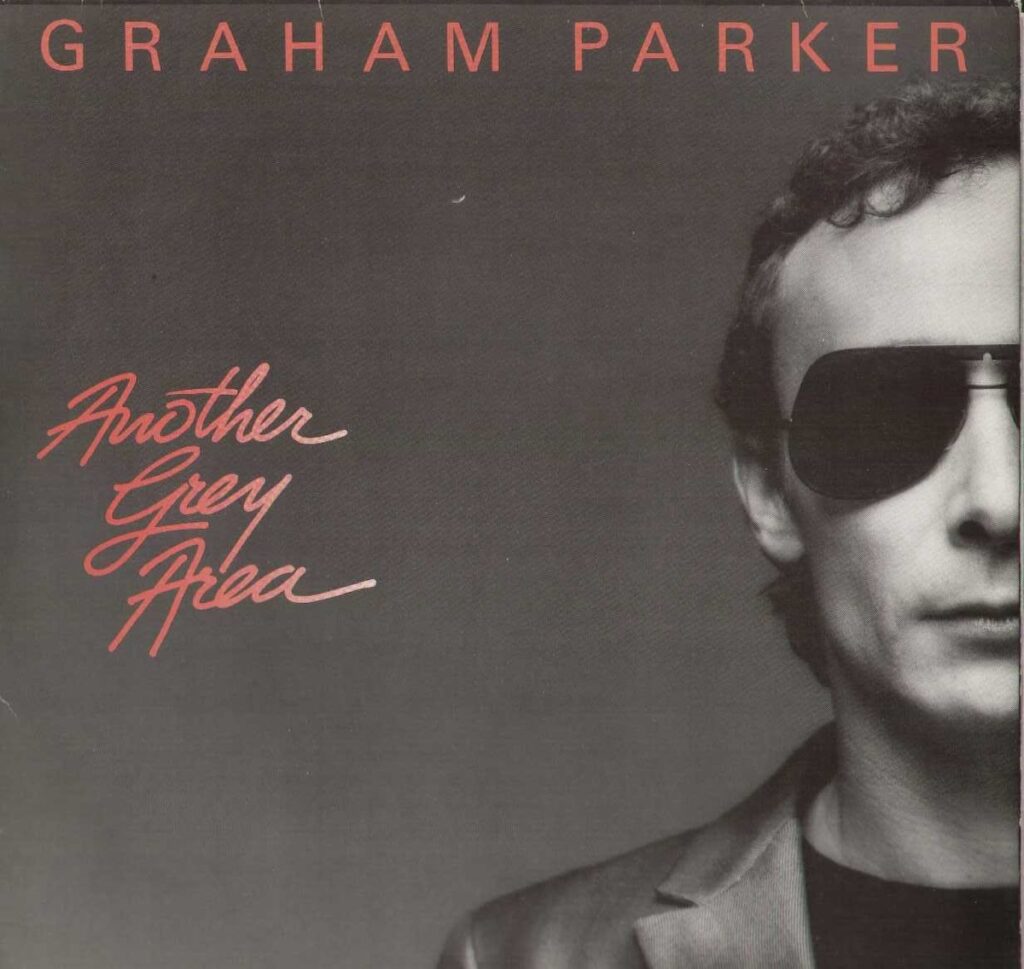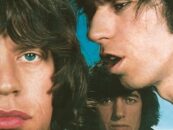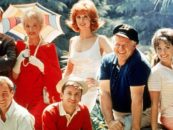The Graham Parker Solo Debut ‘Another Grey Area’: Leaving the Anger Behind
by Amy McGrath There once was an angry young man named Graham Parker, who, when he wasn’t angry, made a great noise with music. But in 1982, his perceived anger folded into some very convincing-sounding pop music.
There once was an angry young man named Graham Parker, who, when he wasn’t angry, made a great noise with music. But in 1982, his perceived anger folded into some very convincing-sounding pop music.
Parker’s March 15, 1982, solo debut Another Grey Area was a revealing facet for a songwriter who had been dropped into the stultifying mislabeled genre known as new wave, much the same way Elvis Costello and Joe Jackson had been: a songwriter with a piercing viewpoint whose hackles and pithy life observations were raised in song. Parker had help, of course, in the delivery with his band the Rumour to great fanfare in the U.K. press and record buying public.
His 1979 release Squeezing Out Sparks, considered by many to be his watershed album, was produced by music industry veteran Jack Nitzsche. It was the punk record he needed to make and it showed in the subject matter, whether it was the catchy, uptempo rocker about the allure and complexities of young love in “Local Girls” or the ultra-controversial “You Can’t Be Too Strong,” with its message of abortion and its emotional aftermath.
Related: Our Album Rewind of Squeezing Out Sparks
Yet, Parker had growing dissatisfaction with the Rumour, which showed in 1980’s The Up Escalator. Given the mixed to less than spectacular reviews, Parker upended the band relationship and headed to the Record Plant in New York City. Having found the production of John Lennon and Yoko Ono’s Double Fantasy to his liking, he enlisted Jack Douglas as his co-producer for what would become Another Grey Area.
A slew of studio musicians, gathered by Douglas—including renowned pianist Nicky Hopkins, guitarist Hugh McCracken, keyboardist George Small, bassist Doug Stegmeyer and drummer Michael Braun—were the power behind Parker. With this much talent and the choice to record outside his comfort zone, the difference in what transpired was among what Parker has called his most “beautiful sounding” album.
The lead-off track and first single ahead of the album, “Temporary Beauty,” was for all intents and purposes a re-introduction for Parker. Released in January 1982, the song’s musical leaning was reflective and tender, led by Hopkins’ work on the ondioline, an electronic analog synthesizer. Lyrically, Parker was still in step with his dry observations of making do with what you have, yet emphatically stated, “Love doesn’t jump out of a magazine/You mustn’t always believe what you’ve seen.” The accompanying music video, with Parker in a Michelangelo-inspired approach carving ice sculptures (and not with a hint of irony, using a blowtorch in one sequence), was in heavy rotation during the early days of MTV.
The title cut is a familiar jump start, taking off quickly like a new Elvis Costello song. Parker was in hyperdrive mode, pumping up his putdowns while simultaneously being dumped by his partner. Confessing he’s been left in “another grey area,” it’s not hard to hear the rollicking cadence of Hopkins’ piano work cutting through to give the song a brighter tone than it should have.
“No More Excuses” was Parker harkening back to his love of reggae rhythms, jabbing away hard with an emphasis on getting tough in the face of society pushing down. In earlier times, this would have led to the songwriter blasting through, feelings be damned. But as witnessed in the tidal wave of emotions put forth, Parker regretted time not spent slowing down and being more appreciative of those close to him, albeit in a mood that is best described as someone who has no f**ks left to give.
The album’s fourth track, “Dark Side of the Bright Lights,” was ostensibly a diatribe against Hollywood parties and the phoniness surrounding those personalities. Not that Parker cared what others thought, but as an astute observer of the human condition, he nonetheless packed a punch with some pretty on-the-nose lyrics (“The videos are scattered/Their messages have screened and clattered/Discussing the actors/as if they mattered”) for one sitting outside the system.
“Can’t Waste a Minute” works better with the lyrics as pure poetry. Although the melody was upbeat and positive, Parker’s delivery bordered on a sing-song rant, tending to squash the hidden gems strewn throughout, including this master-class line, “I woke up in the night and realized I hadn’t slept/I’d just been dreaming/Someone pushed for a fight but somehow I’d already left/I woke up screaming.”
The side one closer “Big Fat Zero” was a high-octane runner, with a repetitive punk guitar riff and a call-and-answer chorus that didn’t play nice with the critics. Parker pointedly remarked in a 1982 interview with Musician, “’Big Fat Zero,’ ‘Another Grey Area,’ they’re all put-downs. Just the same as the other records have been. In England, the critics are panning it. They hate it. Because they’re prejudiced. They’ve also missed the point of the lyrics. They think the songs are cop-outs, but they’re not listening. They’re listening to the fact that there isn’t Graham Parker and the Rumour with the band being angry. You made the point exactly: the band was playing angrily as well and it wasn’t necessary.”
Side two opened with the punchy “You Hit the Spot,” as Parker commandeered the staccato guitar parts for himself (“a great thrill for me”), percolated along by a funky bass line from Stegmeyer. As with his love songs, the tone was enveloped with a sinister cadence, enunciated with an oily sneer. As dark as it may have seemed, the song did well enough to reach #42 on Billboard’s Rock Albums & Top Tracks chart.
“It’s All Worth Nothing Alone” has a piano barrelhouse opening, reminiscent of John Lennon’s demo version of “Goodnight Vienna.” However, Parker’s word-stuffing storytelling and kitchen-sink drama have traces of the songwriting partnership of Squeeze’s Glenn Tilbrook and Chris Difford. That group’s 1981 LP East Side Story epitomized a film’s worth of very English characters and Parker may have been paying tribute to that genre.
Although Parker would not be considered a straight-up balladeer, the closest he comes was “Crying for Attention,” with a soft melody that belied some fairly hard-hitting lyrics (“I’m not crying for attention/I’m screaming to be heard”), delivered with a plea to be seen by a loved one.
The album’s final two numbers, “Thankless Task” and “Fear Not,” could be classified as forgettable, but somehow make it worth their while as the epilogue to a “beautiful”-sounding album. The former was another reggae dub dance that balances itself on the thinner side of the tracks. The latter was a surprisingly uptempo reassuring riff, as Parker assured his partner (in his own take-no-prisoners way) that come hell or high water he’s there (“fear not”) or in this case, “They can rip out bits of me that should keep them fed.”
Another Grey Area may not have been the smash Parker was looking for, although it was agreeable in terms of charting at #52 on the Billboard 200 and #40 on the UK’s Official Chart. Music critics did have some words with Douglas’ work, believing he buffed it to such a high-gloss sheen that the record could skip across the floor. But as it was, the carping failed to recognize that Parker was consciously breaking away from his perceived ‘angry’ persona, looking to send out his message in a style he saw fit. And for the most part, he succeeded.
For its 40th anniversary, Another Grey Area was released in an expanded edition remastered CD with five bonus tracks, including B-sides, alternate versions, and live tracks from Iconoclassic Records, available here. His extensive catalog is available in the U.S. here and in the U.K. here.
Listen to the title track and “You Hit the Spot” performed live





No Comments so far
Jump into a conversationNo Comments Yet!
You can be the one to start a conversation.